-

Opening Hours
view our working time
-
Call us: +91 4936208777
+919562488777
Laser Dentistry
A laser is an instrument that produces a very narrow, intense beam of light energy. When laser light comes in contact with tissue, it causes a reaction. The light produced by the laser can remove or shape tissue. lasers have been used in dentistry since 1990. Lasers can be used as a safe and effective treatment for a wide range of dental procedures and are often used in conjunction with other dental instruments.
How are Lasers used in Dentistry ?
Dental lasers can be used to
Reduce the discomfort of canker and cold sores. Reduce the discomfort of canker and cold sores. Expose partially erupted wisdom teeth.
Remove muscle attachments that limit proper movement.
Manage gum tissue during impressions for crowns or other procedures. Remove overgrown tissues caused by certain medications. Perform biopsy procedures. Remove inflamed gum tissues and aid in the treatment of gum disease. Remove or reshape gum and bone tissues during crown lengthening procedures. Help treat infections in root canals. Speed up tooth whitening procedures.What are the benefits of using Dental Lasers?
Procedures performed using soft tissue dental lasers may not require sutures (stitches). Certain laser dentistry procedures do not require anesthesia. Laser dentistry minimizes bleeding because the high-energy light beam aids in the clotting (coagulation) of exposed blood vessels, thus inhibiting blood loss. Bacterial infections are minimized because the high-energy beam sterilizes the area being worked on. Damage to surrounding tissue is minimized. Wounds heal faster and tissues can be regenerated May cause less pain in some instances, therefore, reducing the need for anesthesia May reduce anxiety in patients uncomfortable with the use of the dental drill May preserve more healthy tooth during cavity removalTypes of Laser Dentistry
- Laser Teeth Whitening
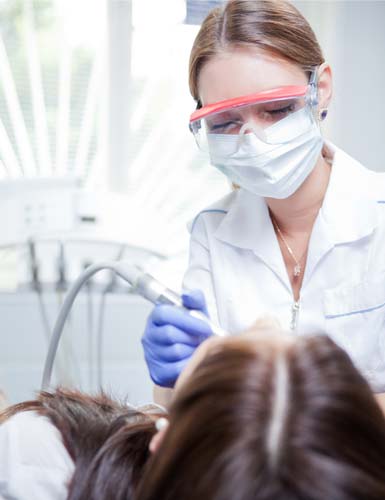
Melanin hyper-pigmentation, or "dark gums", is prevalent in certain individuals who have darker complexions. These dark spots can cause an undesirable appearance to otherwise healthy, pink gums. Through dental laser technology, Our Smile Specialists can painlessly and accurately remove these problem areas. Laser treatment of dark gums can be done in as little as one office visit and with very quick healing time.
Brief description about procedure
Discoloration of teeth due to brown or yellow stains can be corrected by various procedures. While each of them is quite effective in their own ways, every procedure has its own advantages and disadvantages. The type of procedures available will be discussed with you by your dentist. The most advanced one, called laser teeth whitening, uses a bleaching gel. A laser works on this agent while penetrating into the teeth enamel to increase the lightening effect on your teeth. The length of the procedure depends on the degree of discoloration of the teeth.
Benefits of Laser Whitening
Speed
The entire procedure of laser tooth whitening usually takes less that one hour and very often it can last for as little as forty five minutes. This means that it is very easy to schedule into your daily routine and undergo the procedure without seriously interfering with your schedule. In comparison, the more traditional tooth whitening options such as home whitening kits have to be repeated for weeks. The results are guaranteed
The process of laser tooth whitening is not a trial and error kind of treatment. Every person who goes in for the treatment is guaranteed to have teeth that are several shades whiter upon the completion of the treatment. Most of the available options have been able to consistently result in teeth that are up to ten shades whiter than they were before. Long lasting
The results of laser tooth whitening last for up to two years and depending on the kind of dental hygiene that you practice, they can last for a lot longer Comfort
The entire laser tooth whitening process is entirely painless, as most of the people that have gone through it will testify. The only kind of discomfort that has been reported to occur during the treatment is some mild heat sensations on the surface of the teeth after exposure to the beam. - Laser Depigmentation

Melanin hyper-pigmentation, or "dark gums", is prevalent in certain individuals who have darker complexions. These dark spots can cause an undesirable appearance to otherwise healthy, pink gums. Through dental laser technology, Our Smile Specialists can painlessly and accurately remove these problem areas. Laser treatment of dark gums can be done in as little as one office visit and with very quick healing time.
- Frenectomies and Tongue Ties
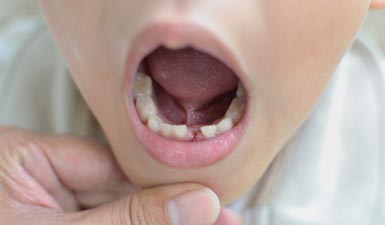
Many people have lips and tongues that are held too tight by the frenum (that ligament that attaches your lips and your tongue to your gum and jaw bone). This commonly causes a gap (diastema) in between the teeth, usually the front upper teeth and the front lower teeth. It can be the cause of speech problems. Many babies can find it difficult to suckle if they have tied tongues. Lactation specialists, early childhood nurses and speech therapists will often see this.
The conventional surgery to release frenums is quite traumatic, painful and can take a long time to heal. With lasers we can precisely and painlessly remove the tissue making it more comfortable for you. There is no bleeding afterwards, no sutures and hardly any discomfort. Children go to school the day after and adults can go back to work the same day. Eating is normal and a baby will suckle immediately after the procedure! It truly is an amazing way to have surgery. - Sensitive and Fluoride Treatment

Lasers help people who suffer from sensitive teeth. When combined with a fluoride treatment, certain dental lasers can reduce sensitivity for upto 12 months. The effectiveness of this treatment depends on the type of laser used, and varies according to each individual patient. Dental lasers assist in the uptake of fluoride within teeth. These enhanced laser fluoride treatments are longer lasting and provide better protection for your teeth against decay.The laser procedure takes only ten minutes per session and two sessions are more than sufficient to take care of most of the tooth sensitivity problems.
- Lip Repositioning
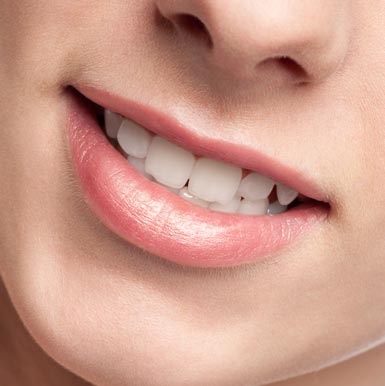
Sometimes connective tissues attached to the inside of the upper lip do not allow for proper lip movement and expose too much gum tissue above the top row of teeth. By removing specific tissues from inside the upper lip, Using Laser, we can can lower the upper lip and create a more aesthetic smile. During the laser surgery, the doctor will remove tissue uniformly to avoid any damage to the patient's muscular movements, such as uneven facial expressions. All of the connective tissues controlling the lip's movement will be shortened significantly, showcasing the teeth instead of excessive gums.
- Gum Lifting
During cosmetic procedures we often need to correct the level of the gum before veneers or crowns are made. Your smile is made up of lips, teeth and gums. They should all be in harmony. Usually this procedure is done with scalpels and sutures (especially if bone needs to be adjusted with a drill), and takes six to eight weeks of healing before your veneers or crowns can be made. It is a highly specialized cosmetic procedure that not any dentist can perform
- Cavity Detection and Removal
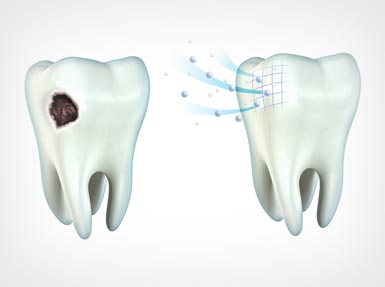
A low-powered laser can be used to locate tiny pits within tooth enamel that can become cavities. The laser can detect decay early. Once located, the tiny spots on the tooth can be covered with a clear sealant in order to prevent cavities. Cavity removal can be accomplished with dental lasers. The laser has the ability to remove decay within a tooth, and prepare the surrounding enamel for bonded fillings. The need for anesthesia is greatly reduced or eliminated over the traditional methods
- Laser Gum Contouring
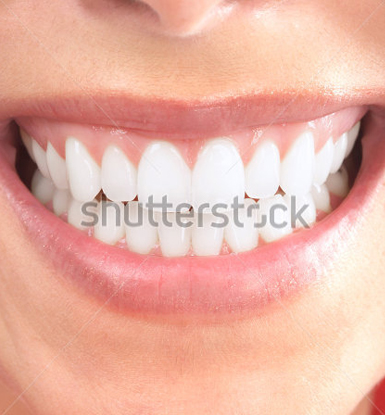
Even if a person has straight, healthy, and symmetrical teeth, the beauty of their smile may be diminished if the gum line is uneven or falls too far below the lip line. Often referred to as a "gummy" smile, it can make the teeth look small and cause people to feel self-conscious about the appearance of their smiles. Ideally, the gums should appear even and smooth, and should act as a frame to complement a person's smile, rather than as a distraction from it. Fortunately, a gummy smile can now be corrected with procedures such as gum contouring. Enamel for bonded fillings. The need for anesthesia is greatly reduced or eliminated over the traditional methods


